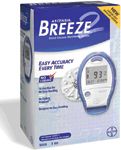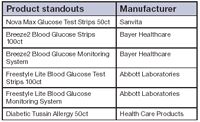The best over-the-counter wellness, health, and beauty products from 2007
This article is contributed by the Hamacher Resource Group (www.hamacher.com). Based in Milwaukee and with offices in the United Kingdom, HRG's comprehensive services combine the art of communicating with the science of data analysis to improve the profitability of every link in the retail healthcare supply chain. Manufacturers, retailers, wholesalers, and others count on HRG for strategic solutions to their business goals.
This article is contributed by the Hamacher Resource Group ( http://www.hamacher.com/) . Based in Milwaukee and with offices in the United Kingdom, HRG's comprehensive services combine the art of communicating with the science of data analysis to improve the profitability of every link in the retail healthcare supply chain. Manufacturers, retailers, wholesalers, and others count on HRG for strategic solutions to their business goals.
With thousands of health, beauty, and wellness (HBW) products introduced to the market last year, you were likely faced with the decision of which new products to definitely stock and which products to pass up. Do you have the resources to uncover which new products are backed by effective marketing campaigns? Do you know which products are better left to grocery or mass outlet shelves?
Hamacher Resource Group (HRG) worked directly with HBW manufacturers to review over 2,800 new products from 21 HBW categories last year. They determined which items deserved to be on your shelves and which ones just didn't make the grade. Only the very best new products receive an HRG star rating, which is required for planogram placement. In 2007, 627 new items were added to HRG's largest-set planograms.
The HBW analysts at Hamacher Resource Group take an unbiased approach to reviewing new items. A combination of factors, including innovation, marketing support, potential for profit, orientation, manufacturer track record, and category growth potential, help the analysts determine which products should be considered for placement in an HRG planogram.
Based on all of the criteria listed above, HRG gives each new item a zero-, one-, two- or three-star rating. In other words, just because a product may come from a manufacturer with a strong selling history, that doesn't necessarily mean it will receive a high rating. In order for an item to receive a coveted HRG star, it must achieve high marks in the other areas as well. This unbiased approach to new product ranking plays an important role in a drugstore's success.
The more stars an item has, the more likely HRG is to place it in departments of all sizes. Of the 2,844 products evaluated in 2007, 514 received at least a one-star rating.
What follows is HRG's assessment of the product standouts in three product categories-diabetes care, cold and allergy, and pain relief.
Diabetes care (154 items in largest planogram)

